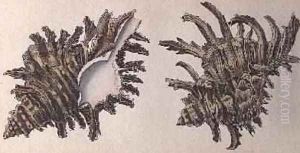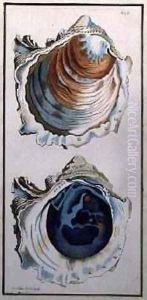Richard Polydore Nodder Paintings
Richard Polydore Nodder was a British artist, engraver, and natural history illustrator whose exact birth date remains unknown, but who is documented to have died in 1820. Nodder's work primarily focused on botanical and zoological subjects, making significant contributions to the scientific and artistic documentation of flora and fauna during the late 18th and early 19th centuries. His most notable contribution was his involvement in the production of 'The Naturalist's Miscellany' or 'Vivarium Naturae,' which he took over from his father, Frederick Polydore Nodder, an esteemed botanical artist in his own right.
Richard Polydore Nodder's skill in natural history illustration was recognized through his appointment as Botanical Painter to King George III. This prestigious role not only highlighted his artistic talents but also underscored the importance of natural history illustration in the period's scientific exploration and classification. Nodder's illustrations were critical in disseminating new scientific knowledge of plants and animals, which were being discovered during expeditions around the globe.
Despite the significance of his work, detailed records of Nodder's life are sparse, and much of what is known about him comes from the legacy of his illustrations and the publications to which he contributed. The meticulous detail and accuracy of Nodder's illustrations have made them valuable resources for both contemporary scientists and historians of science and art. His work continues to be appreciated for its contribution to the natural sciences and its artistic beauty, bridging the gap between science and art in a way that few other artists of his time could.
After his death in 1820, Richard Polydore Nodder's contributions to the fields of botany and zoology remained influential through the continued use and admiration of his illustrations. His legacy is preserved in the collections of natural history museums and libraries around the world, showcasing the enduring appeal and importance of his work in the documentation and understanding of the natural world.

